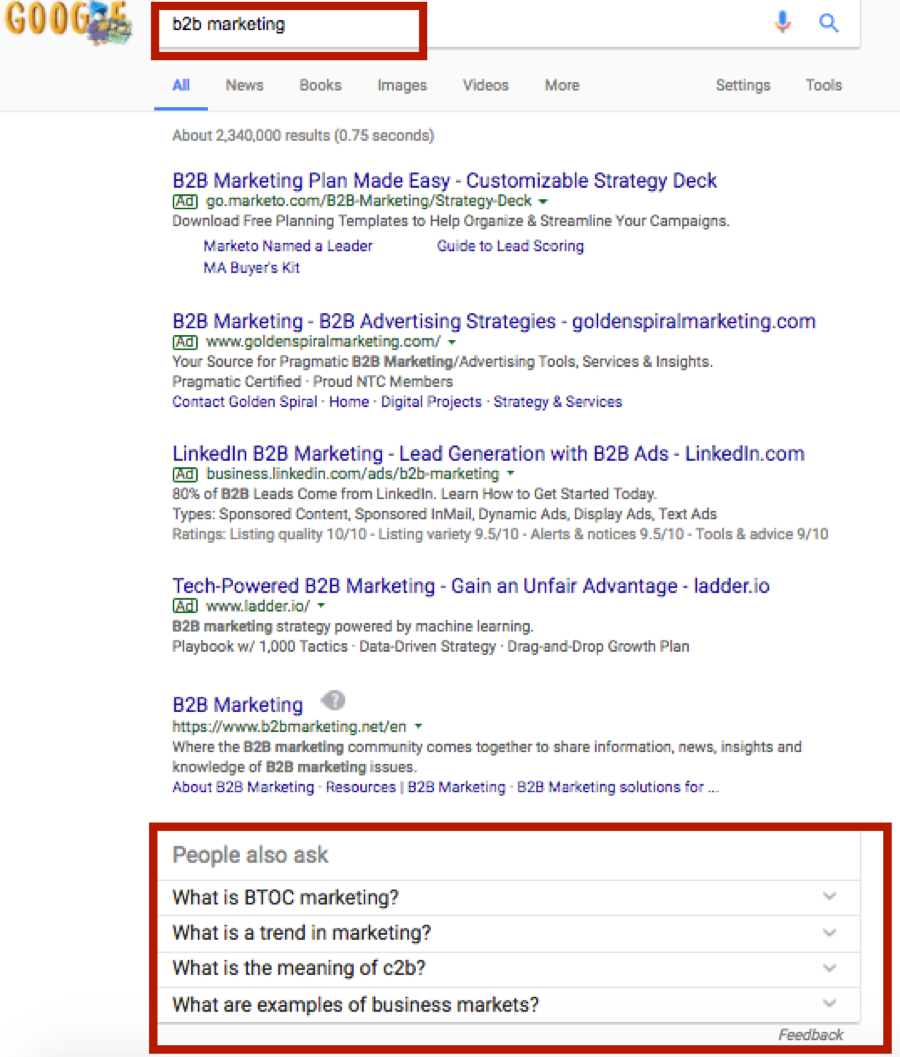Author: Mike Murray / Source: Content Marketing Institute

Businesses should use 2018 to break the bad habit of viewing aspects of an SEO marketing strategy as a one-time exercise. Too often, some companies optimize a website page and never adjust it.
Though 61% of marketers in a 2017 HubSpot study say increasing organic visibility is their highest inbound marketing priority, they don’t always follow through.
You can tell they don’t fully embrace an SEO strategy any time:
- SEO page titles lack a keyword focus.
- SEO page titles merely mimic the content headers.
- Page URLs are a mile long.
- Nothing is ever modified (take a quick look with the Wayback Machine, a popular archive of more than 300 billion web pages).
Now is a good time to take a closer look at SEO marketing data because search is getting worse for all types of B2B and B2C businesses.
Your keyword phrase that continues to rank No. 1 organically is no longer the top result seen by searchers because of design changes to Google’s search engine results pages (SERPs). That lack of visibility jeopardizes the effects of your organic traffic – leading to fewer clicks, leads, sales, page views, and conversions.
SERP elements (like videos or images) have been around for years, but they appeared intermittently. In the last couple of years, their use has intensified and shows no signs of slowing down.
Featured snippets are the summaries for the searcher’s query that appear at the top of the page (below the ads from Google AdWords).

The People also ask feature includes related queries to the original search phrase and is displayed on the front page of results.

Here are some other SERP elements:
- AdWords – up to four at the top with optional extensions can make each ad deeper
- Knowledge Graph – boxes that include data ranging from companies to celebrities on the right of search results page
- Sitelinks – multiple links to subpages within the website result visible below the primary website
- Local packs – several local listings appear together (often under a map marking the location of each one)
- Carousel listings – interactive visual display of results for things like movies, songs, and restaurants
- Reviews with star ratings (make some organic results deeper)
- Image packs – often a single row of images appearing on the results page
- In-depth articles
To go more in depth on these elements, Moz has good tips on how to get your website included in the specialized SERP features. Search Engine Land touches on some of them as well and explains some other notable ranking trends, such as schema markup (instructions that help search engines understand types of content).
Even if your website isn’t included in SERP features as often as you would prefer, you still can work to improve your regular organic results by updating and/or expanding your content.
Use these three steps to make SEO updates.
Without trying too hard, larger enterprises can rank for many keywords because they’re credible in the eyes of search engines (the number of pages and backlinks help). Unfortunately, too many businesses don’t make enough updates to exploit their potential. They’re like a smart student who is a constant underachiever.
1. Find your SEO sweet spot based on data; set realistic expectations
You can target any keyword or phrase, but you face two primary challenges. The word may be too competitive or not searched, which would offer little to no value for your business.
Use a tool like SEMrush to better understand what keywords would be reasonable to pursue.
Also, look at how your website ranks for your keywords today. For example, does it typically rank in the top five positions for a keyword searched an average of 500 times a month on Google? What about searches conducted 1,000 times or more?
A thorough review allows you to size up trends and see potential sweet spots by recognizing how existing keywords perform – their ranking position in relation to search volume.
Here’s the thing: Set realistic expectations. It doesn’t make sense to pick a relevant keyword with 2,000 searches a month and expect a top ranking if you can’t crack the top 30 for keywords with only 1,000 searches a month.
Or maybe your targeted keyword averages 50 searches a month. That may be OK, depending on what you sell and how many leads you need to get to a sale.
No matter the number of searches, you can improve rankings more quickly by forgoing…
Peter Bordes Jr
Founder & Managing Partner Trajectory Ventures. Lifetime entrepreneur, CEO, Board Member, mentor, advisor and investor.
Obsessed with the infinite realm of possibility in disruptive innovation driving global digital transformation in technology, cloud-based infrastructure, artificial intelligence, data, DevOps, fintech, robotics, aerospace, blockchain and digital media and advertising.

